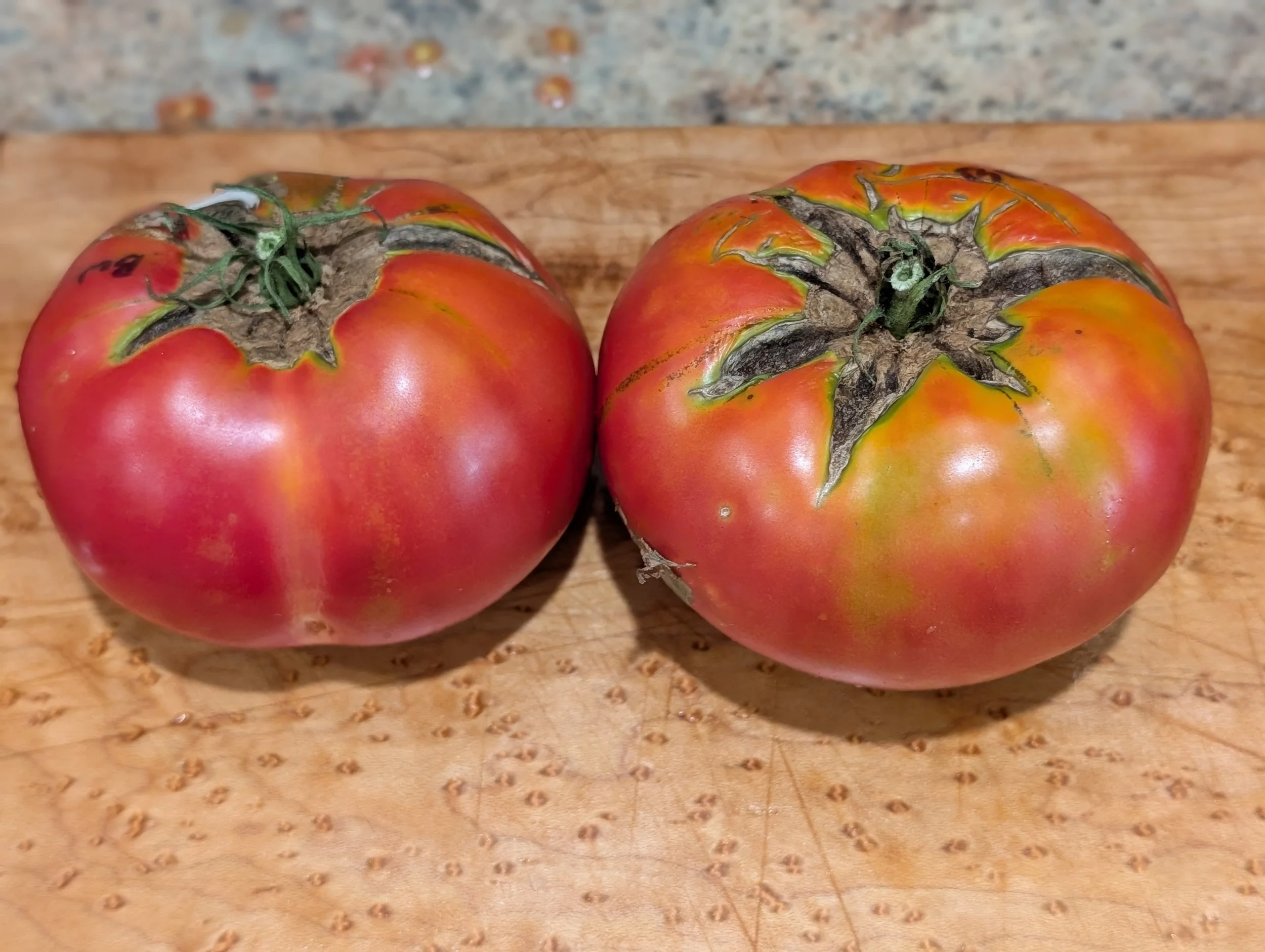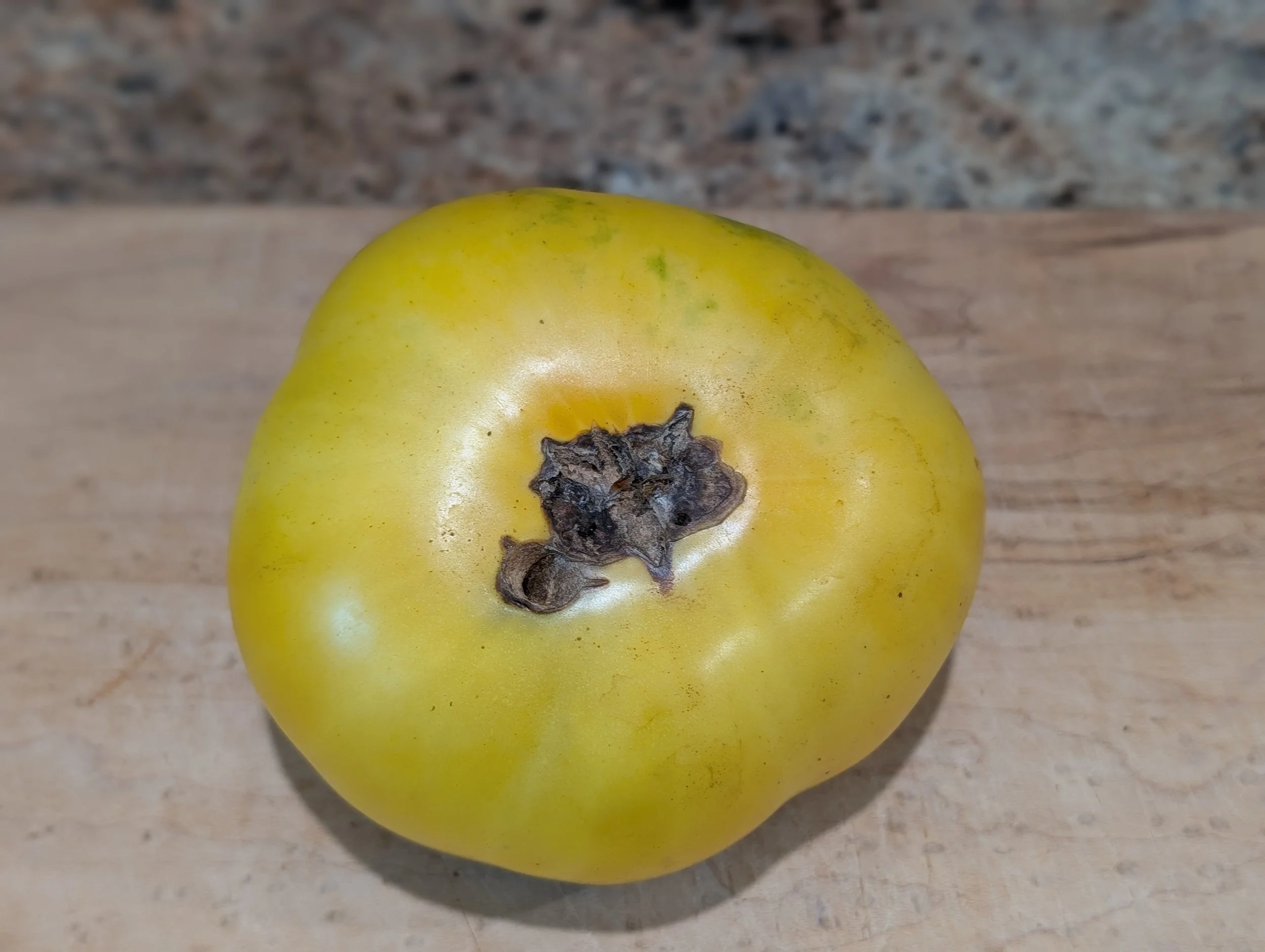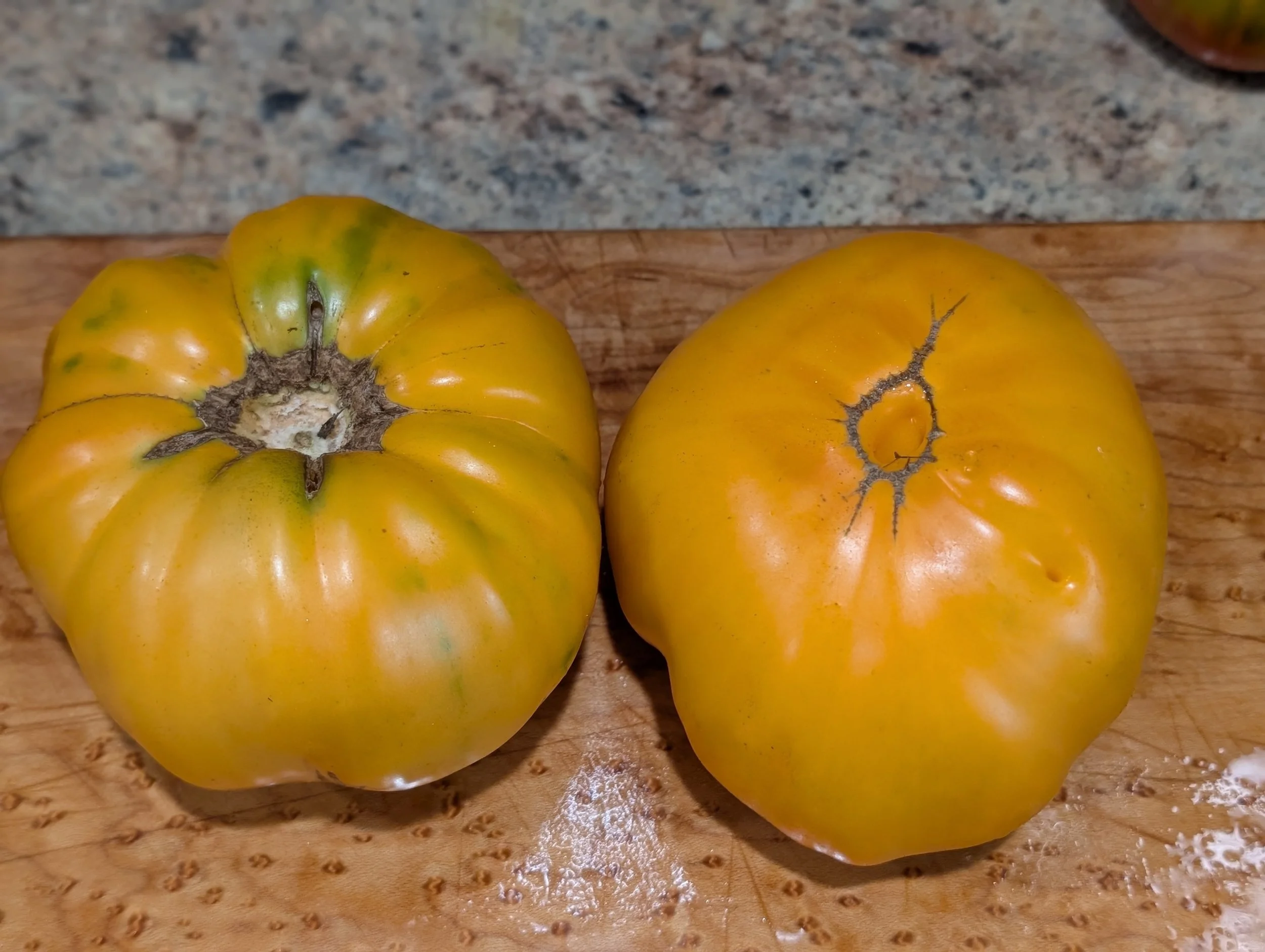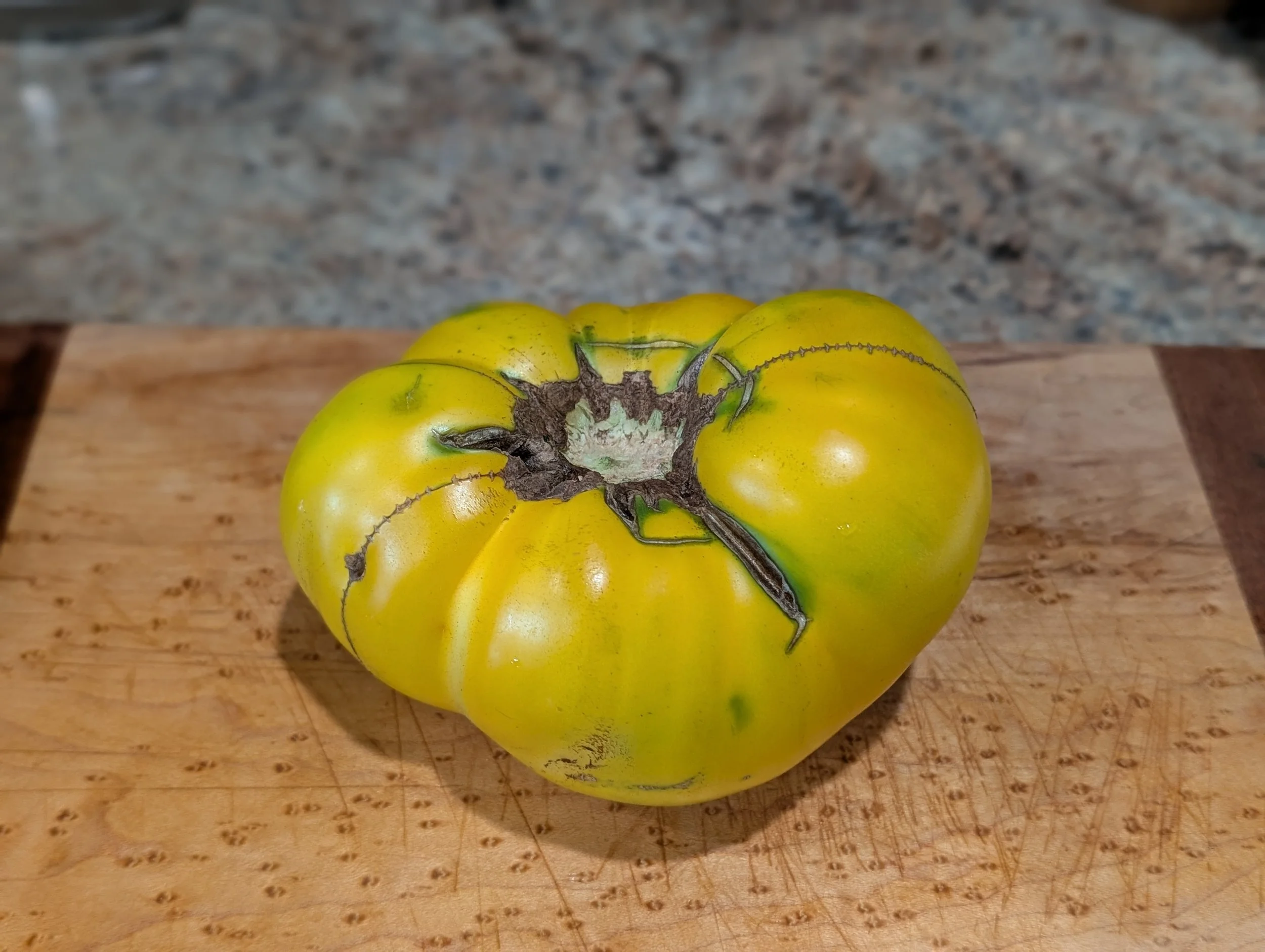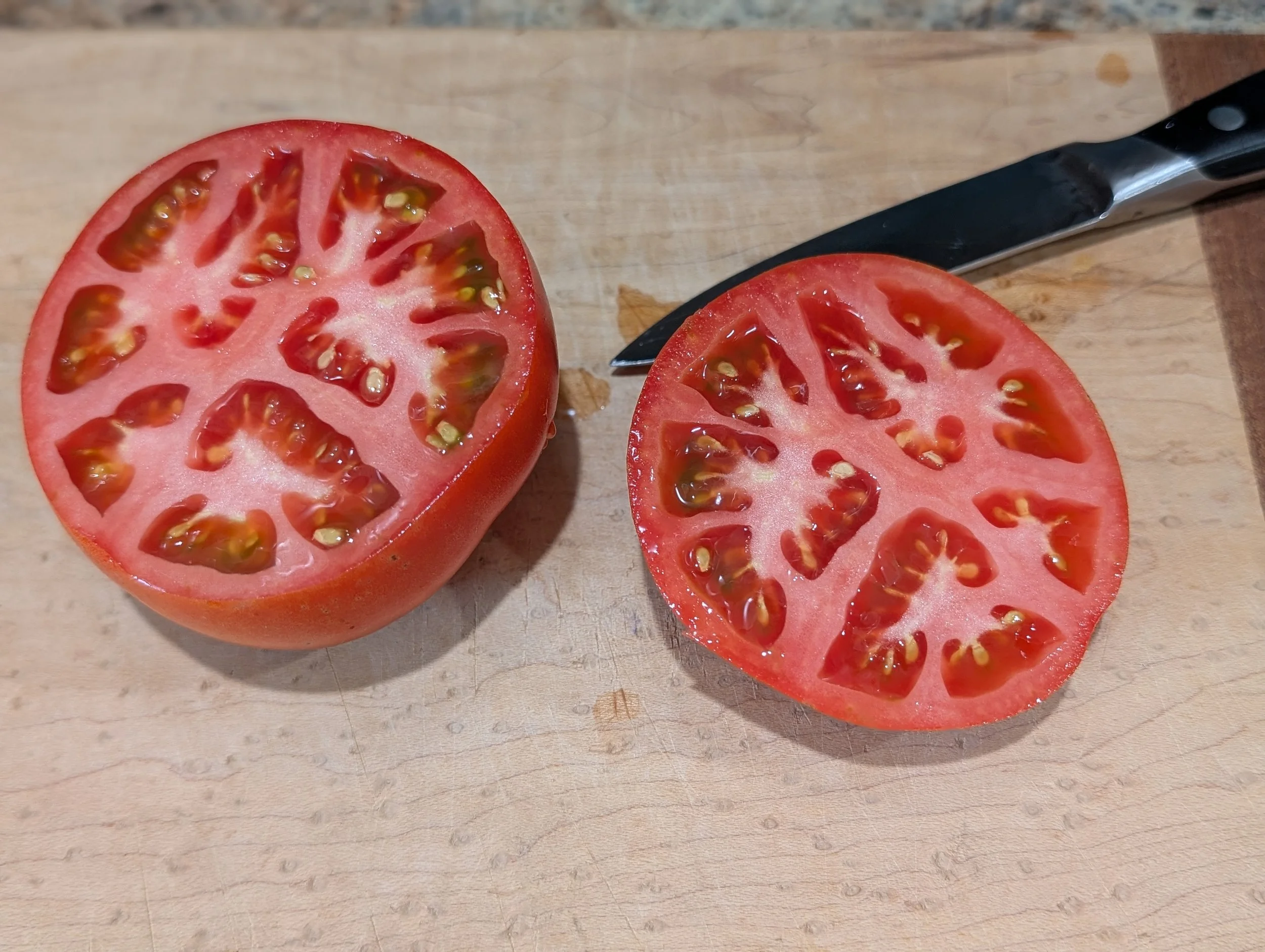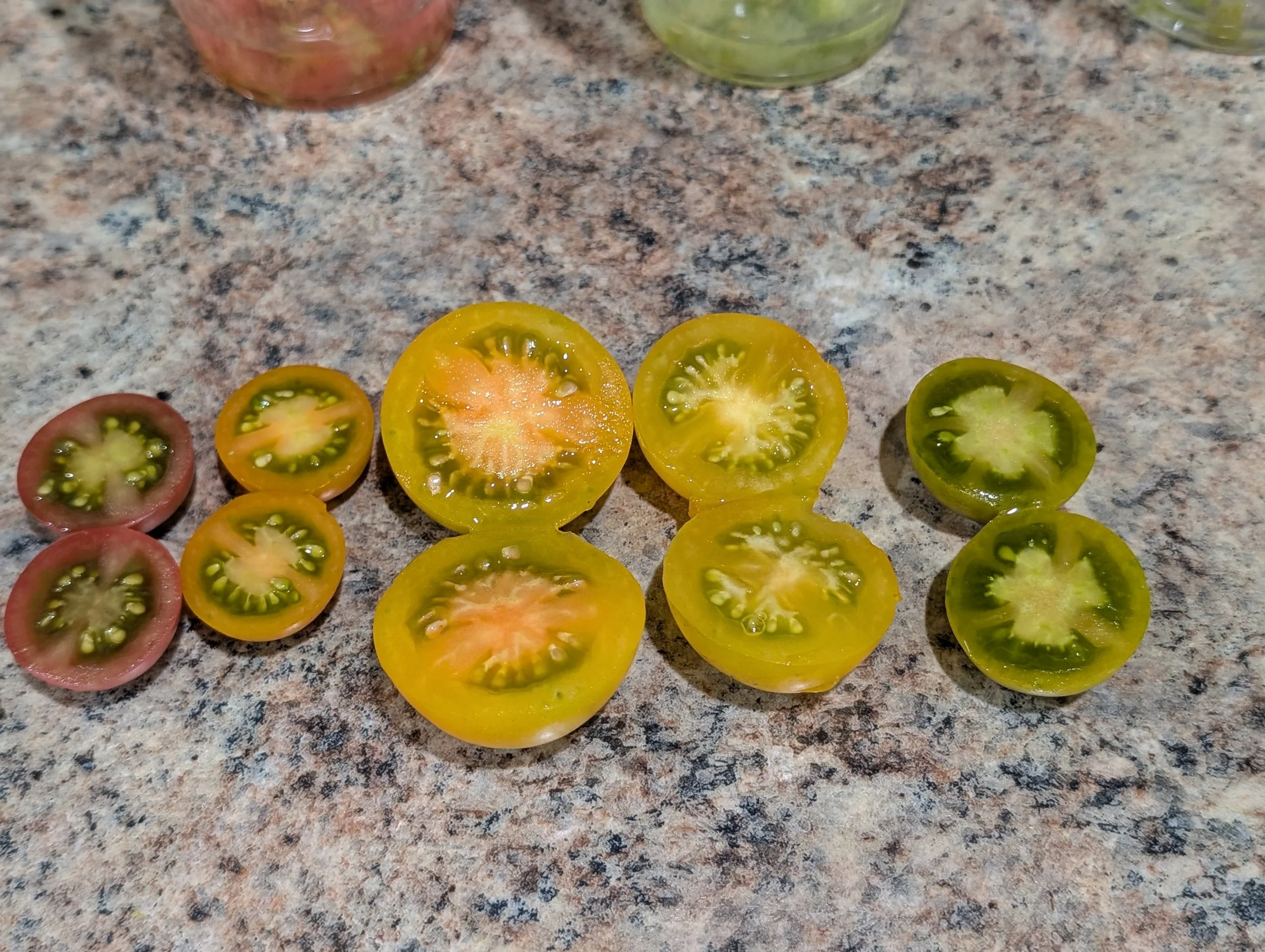The garden in early September.
The last three blogs summarized all of my tomato growing efforts for 2025. But there is more to life than tomatoes for a gardener. This blog will report on everything else that I grew in 2025, in a bit less detail than for the tomato sections.
Beans! Goldilocks is obvious. Fowler are the fatter green beans, Maxibel the slender ones
Bush Snap Beans
Goldilocks - We love this bright yellow slender yellow snap bean. It has replaced Roc d’Or as my favorite wax type. We get a heavy initial crop then pull the plants.
Maxibell - I rotate my green bush beans, and it has been some time since I grew this variety. It was superb - long slender beans that are simply delicious. This is also a single cropper, and we pulled the plants once that first flush was finished. I alternate this with Jade and Marbel for our green slender beans.
Fowler - This is more of a traditional green bean, rather than the slender filet types. Fowler is special to me in that it is the first variety I requested as a new Seed Savers Exchange member in 1986. The variety is not as lanky as the other two beans I grew this year, but yield very heavily. Once the first flush is picked, the plants tend to reflower heavily, providing a nice second crop. Insects such as bean beetles tend to ignore it as well. It is actually the perfect bush green snap bean!
Deli Star hybrid - is indeed a star!
Cucumbers
Deli Star hybrid - We only grew this because it is absolutely wonderful. The medium length, somewhat slender cukes are pale green, with tender skin that needs no peeling. The texture is crisp but tender, and the best flavored cucumber I’ve tasted. It is mainly female flowered and yields very heavily, and seems to resist disease well. The main downside is that it is available only from UK seed companies. I have to thank my friend Sam for generously providing me with seeds.
Zephyr and Kefren
Summer Squash
Zephyr - Hands down my favorite summer squash, this variety is just perfect. The yield is incredible. The flavor is unmatched, as is the texture, firmer than other summer squash. The only slight downside is that the plant runs a bit, and takes up quite a lot of real estate.
Kefren - I still seek the idea zucchini - Kefren is very good, but not the “it” variety I seek. Though the dark green squash are well formed and delicious, the yield is not quite as generous as I would like. I enjoy the variety Dunja much more. I may go back to an old favorite - Spineless - next year.
Natural Sweet variety - first corn I’ve grown successfully since the late 1980s in West Chester, PA
Corn
Natural Sweet - I did a full analysis of my straw bale - corn project. It was very successful and one of the best elements of my 2025 garden. All of the details can be found here.
Sweet Peppers
Red Corno di Toro left, ripe Orange Bell right
Orange Bell - This was the best sweet pepper of our 2025 garden. The medium to pale green blocky bells ripen orange and are very sweet.
Unripe Chocolate Bell. I am waiting patiently!
Chocolate Bell - I am still waiting to get a ripe fruit from my plant. I have one nice big blocky green fruit coming along.
Shishito - This is a pepper machine. They are still going strong.
Carolina Amethyst, on the way to red
Carolina Amethyst - Early fruit rotted before ripening, but later fruit are looking great. This pepper is a bell that goes cream to lavender to red.
Royal Purple on the way to deep red
Royal Purple - The light chartreuse bells go to black purple, then to deep red. Though it seemed to have collar rot early on, it held well and is now ripening lots of nice bells.
Fire Opal - The plant in the straw bale was grown from crossed seed - the peppers are like large Jalapenos and go from deep green to brownish purple to red. I have one growing in a raised bed that looks correct - it should be a cream colored bell that goes to lavender, then to golden yellow.
Super prolific White Gold - color is correct, but the peppers are quite small.
White Gold - This is an interesting one. The color is correct - bells that go from cream to yellow - but they seem very small.
Red Corno di Toro - Someone sent me seed for this a few years ago and I got exactly one to germinate. I have plenty of saved seeds now - the large dark green frying peppers go to red - and are very sweet.
Hot Peppers
Jalapeno - Nothing surprising here, a very tall plant, typical dark green peppers with corking go to red. They are milder than I expected.
Pinata is great this season
Pinata - Wow - are these pepper machines! chartreuse to yellow to orange to red quite hot Jalapeno types. I have two plants - both are thriving.
Assortment of ornamental hot peppers in my elevated bed
Mix of ornamentals - I grew out quite a few lots of peppers in the Gemstone/Bouquet selection project and have some good leads to move forward with. They are edible, and are a Thai type but very colorful. When red they dry well - we grind them for hot pepper flakes.
Skinny Twilight ready to harvest
Eggplants
Mardi Gras - This is my own selection from a bee cross. The tear drop shaped light green fruit are lightly striped with lavender. It did well this year. The flesh is light green.
Green Ghost, producing heavily
Green Ghost - A sister eggplant to Mardi Gras, it did great - pale green tear drop shaped fruit with light green flesh.
Midnight Lightning - The dark green foliaged plant has a heavy purple cast. Slender dark purple eggplant have green flesh - very prolific - and the most like its parent, Orient Express hybrid, from which I selected this.
Skinny Twilight - This is also from Orient Express hybrid. The foliage doesn’t have the purple cast quite as much, and the fruit are not as dark a black purple. This is also pale green fleshed.
Twilight Lightning - I messed up my labeling, and didn’t grow this variety. It is also from the Orient Express selection project, has very slender white/light lavender fruit with white flesh. There’s always next year!
Native black eyed Susan in our perennial garden
The rest
I grew two basil varieties - Emerald Towers (a Greek Columnar, non flowering type), and Genovese. This was the best basil season experienced in Hendersonville so far, with very little downy mildew attacks.
As far as flowers from seeds, I grew two salvia coccinea - a scarlet, and a salmon pink (Coral Nymph), nice verbena and zinnia color mixes, and Petunia Red Save for a hanging basket. The perennial garden is always the star, so we use annuals as accent flowers in containers or the borders.
Basil (back row) and ornamental hot peppers (middle and front rows) from late June









































